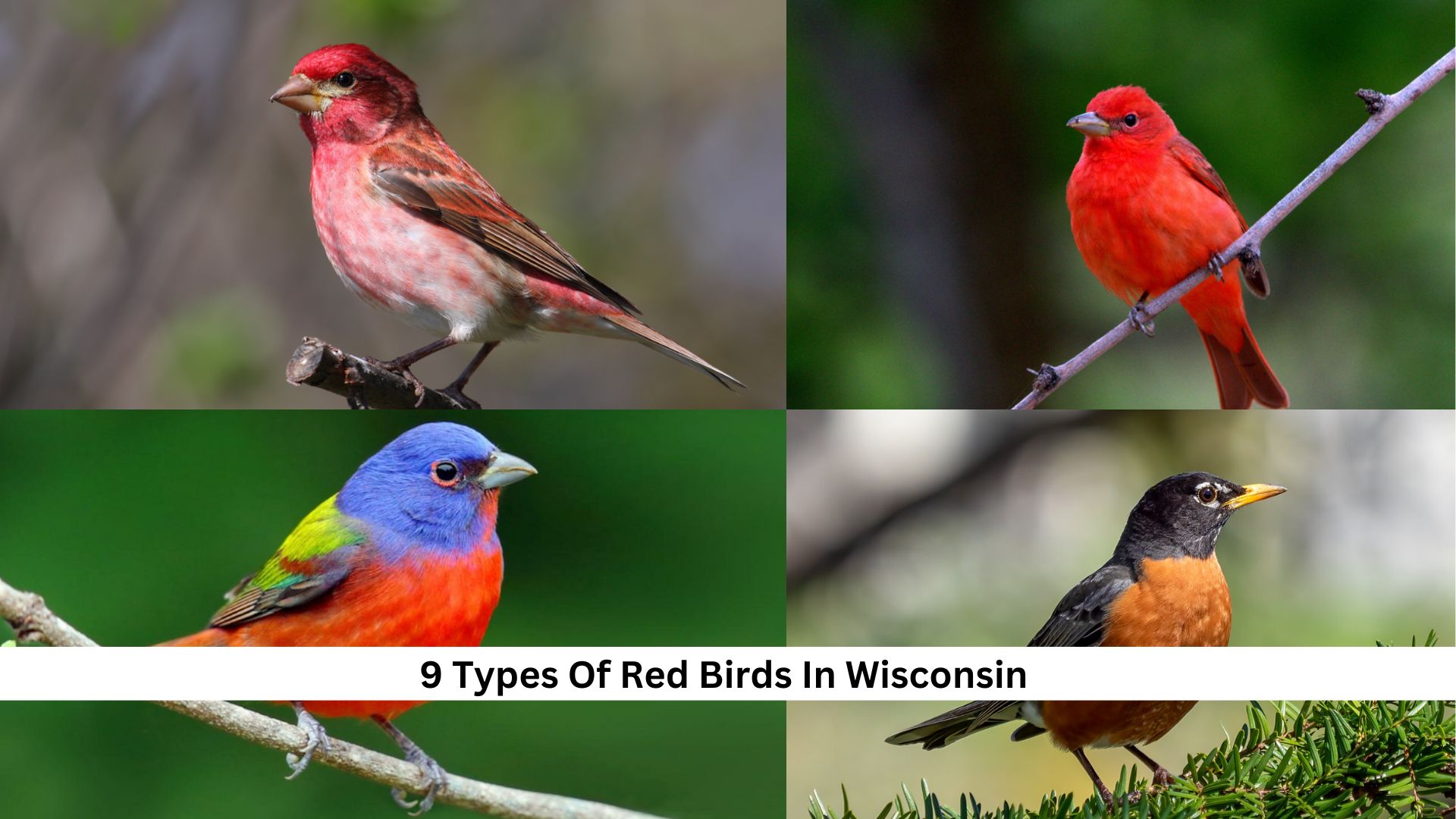Wisconsin is home to a variety of red birds, from the common Northern Cardinal to the rarer Summer Tanager. These birds aren’t just pretty to look at; they’re also key players in the local ecosystem. Getting to know these red-feathered locals does more than please the eye. It helps us understand the balance of nature and the diversity of life. Let’s dive into the world of these nine red birds, exploring their behaviors and where they live. How do these birds tell us about the state of their environment?
Commonly Seen Red Birds In Wisconsin
Northern Cardinal
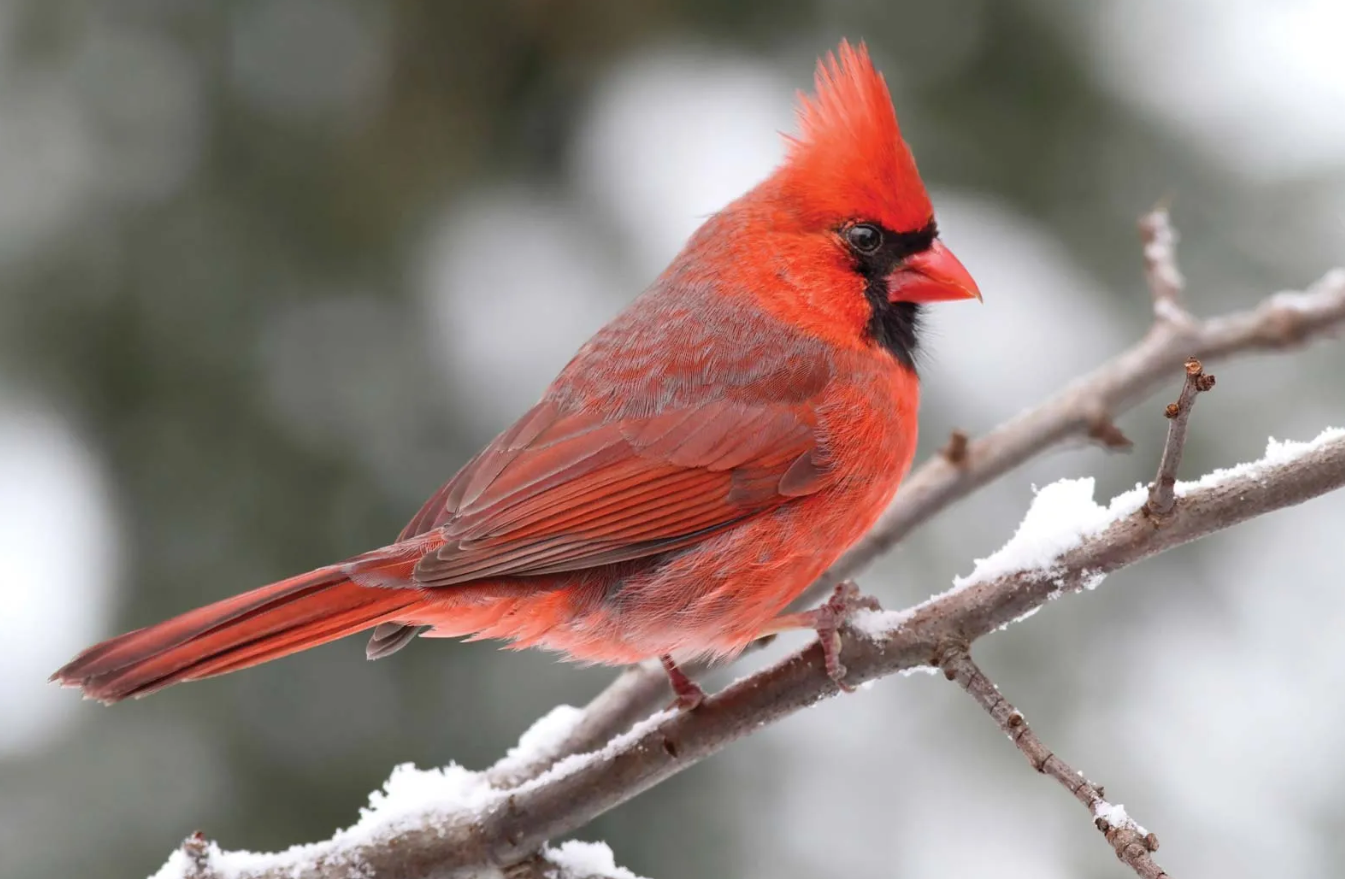
- Bright red bird found year-round in Wisconsin.
- Males are a deeper red than females.
- Both sexes have a black mask and a crest.
- Strong beaks help them thrive through Wisconsin’s tough seasons.
- Spread seeds, particularly fond of sunflower seeds.
- Often seen at bird feeders, providing bird watchers a chance to observe them up close.
House Finch

- Bright red feathers make them easy to spot in Wisconsin.
- Males have red plumage, while females are streaky brown.
- Strong beaks, ideal for cracking open seeds, their primary food.
- Social birds, often heard chattering before they’re seen.
- Frequently gather where there’s food like sunflower and Nyjer seeds.
American Robin

- Commonly seen in Wisconsin with a rusty red breast.
- Adapts well to human-altered environments.
- Prefers foraging for bugs and fruit on the ground rather than visiting feeders.
- Known for their beautiful, clear whistling songs.
- Males and females look alike, making them easy to recognize.
- Lay distinctive blue eggs in strong, cup-shaped nests, showing excellent care for their young.
Less Common Red Birds You Might Spot In Wisconsin
Scarlet Tanager

- Bright red body with black wings, found in Wisconsin.
- Prefers big, leafy forests and usually stays in the treetops, making them hard to spot.
- Males are especially bright; females and young birds are yellow-green.
- Their diet consists mainly of bugs and fruit, contributing to their striking red feathers.
- Best spotted during migration when they head to South America for the winter.
Pine Grosbeak
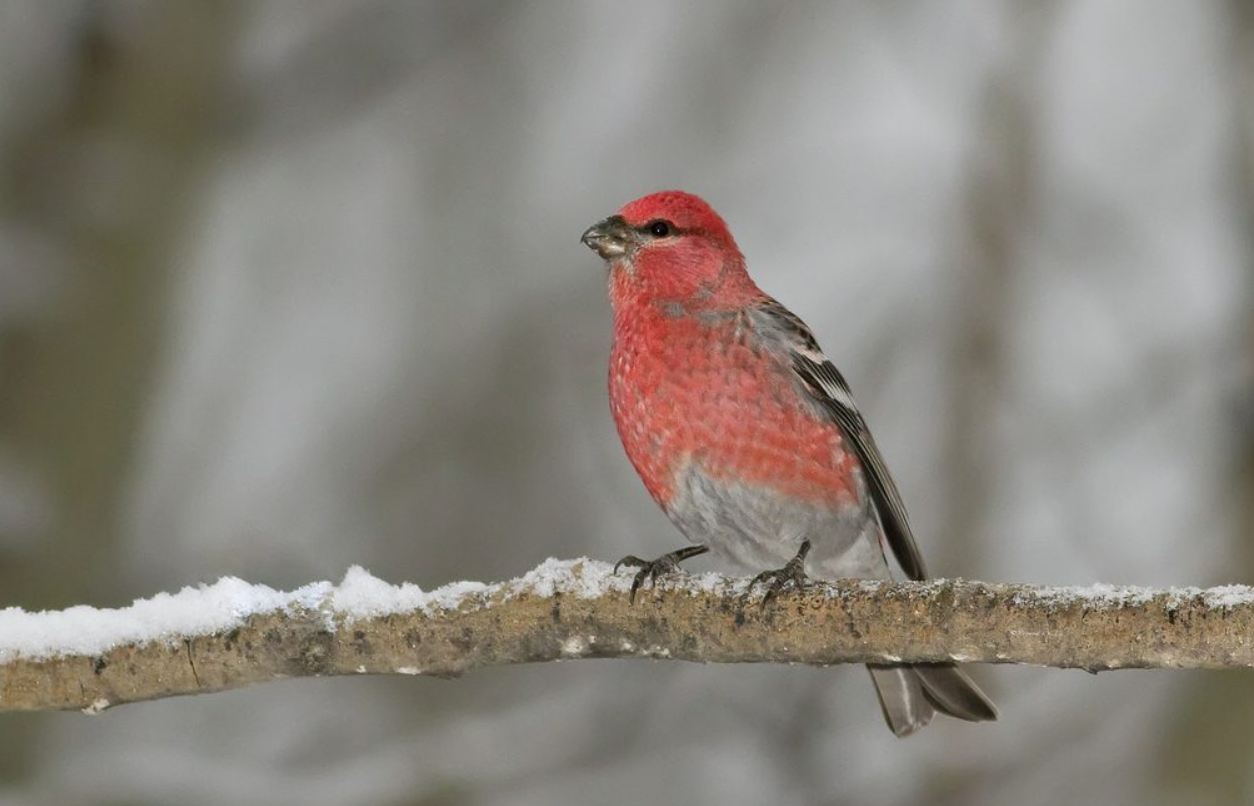
- A rare, large bird in Wisconsin from the finch family, well-suited for cold weather.
- Males are bright red on the head, chest, and back; females and young are gray with touches of red.
- Lives in pine forests and primarily eats seeds and buds.
- May come closer to people in winter, seeking sunflower seeds at backyard feeders.
Red Crossbill

- Found in Wisconsin’s pine forests, mainly known for its unique crossed bill, perfect for extracting seeds from pine cones.
- Males are bright red; females are yellow-green.
- Moves around based on food availability, making sightings unpredictable.
- Breeding season is flexible and occurs whenever there’s enough food, potentially any time of the year.
Rarely Seen Red Birds in Wisconsin
Painted Bunting
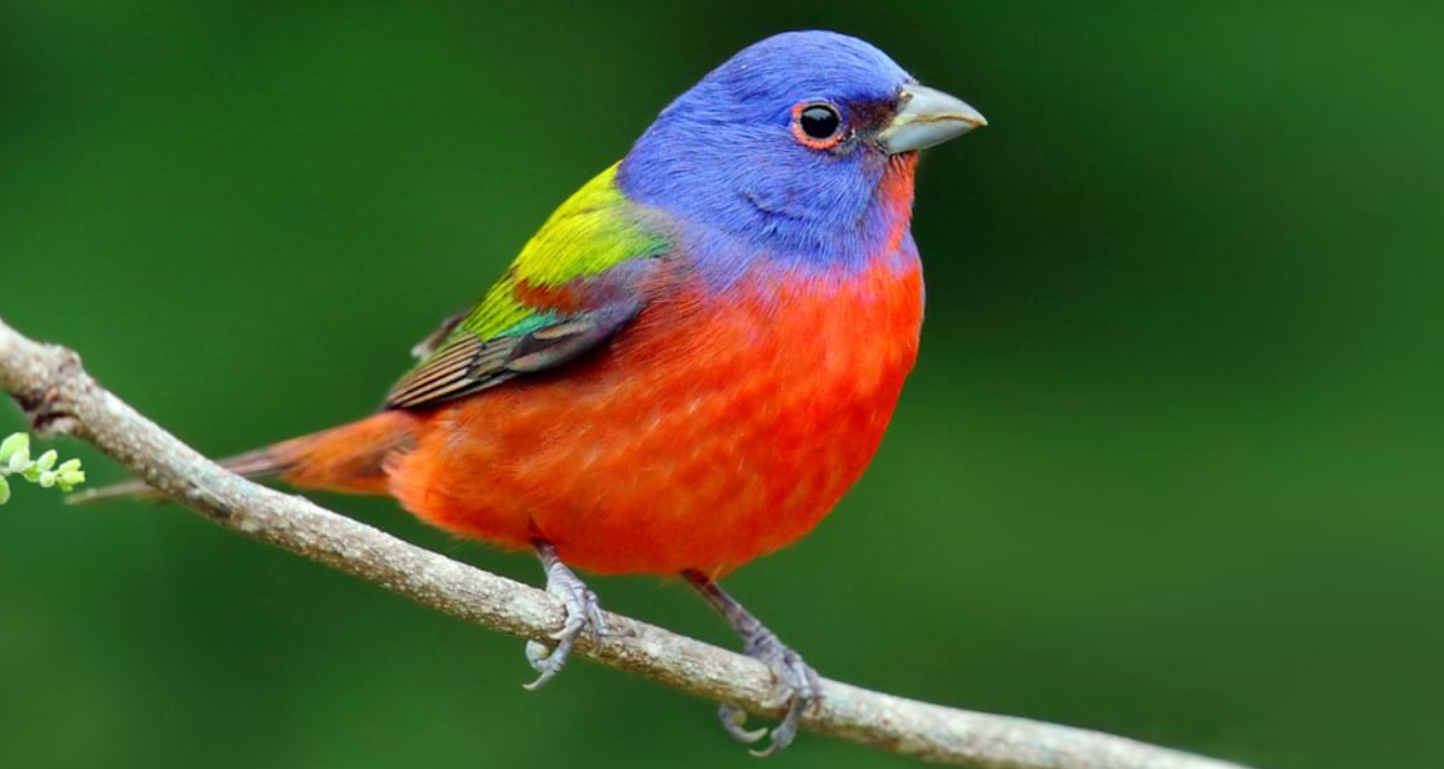
- Rare visitor in Wisconsin, typically found in the southern U.S.
- The male has a bright blue head, red belly, and greenback, making him easy to spot.
- Females and young birds are yellowish-green and harder to see.
- Most likely to be seen during spring or fall migration.
- The best chances of spotting them are in areas with lots of bushes or well-stocked bird feeders.
Summer Tanager
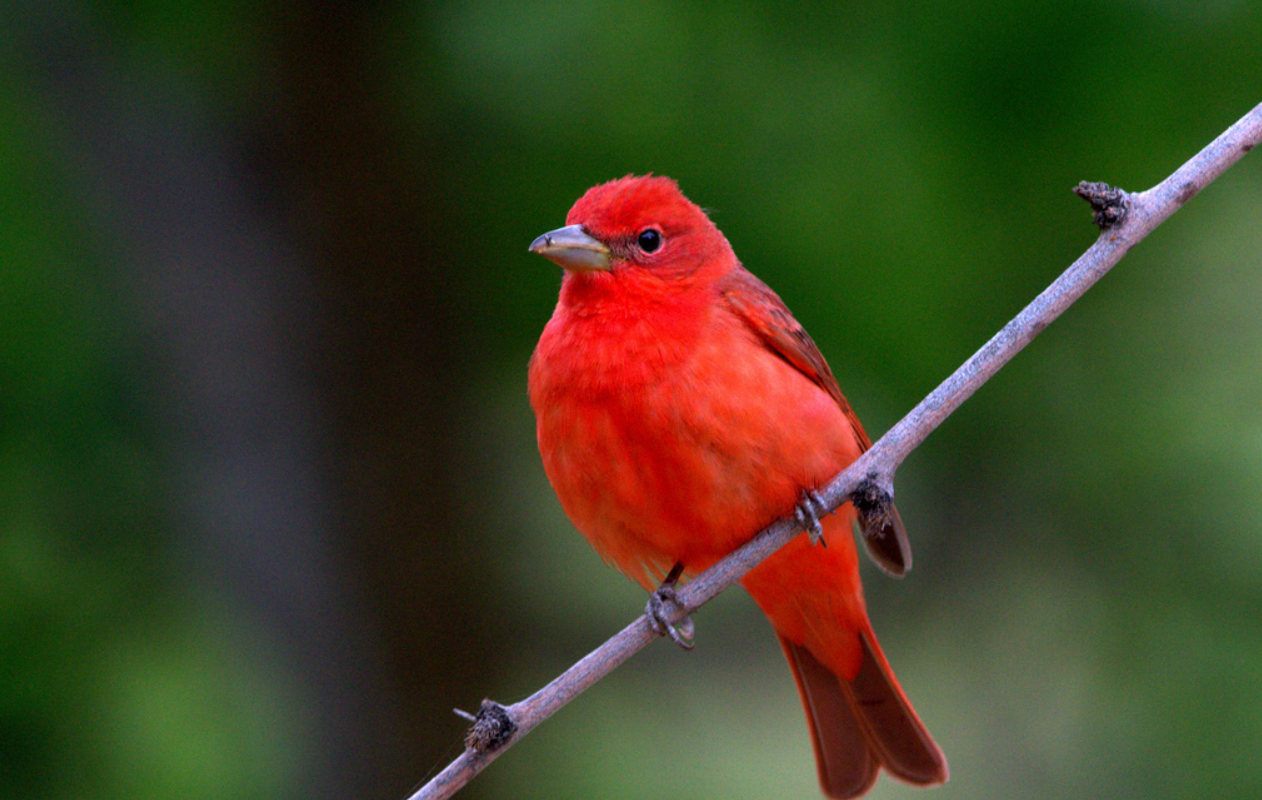
- Rarely seen in Wisconsin, usually found in the southeastern U.S.
- Males are completely red, standing out from other birds.
- Females and young birds are a softer yellow.
- Inhabit deciduous forests and feed on insects, helping control pest populations.
- Most likely to be spotted in wooded areas during the summer.
Purple Finch
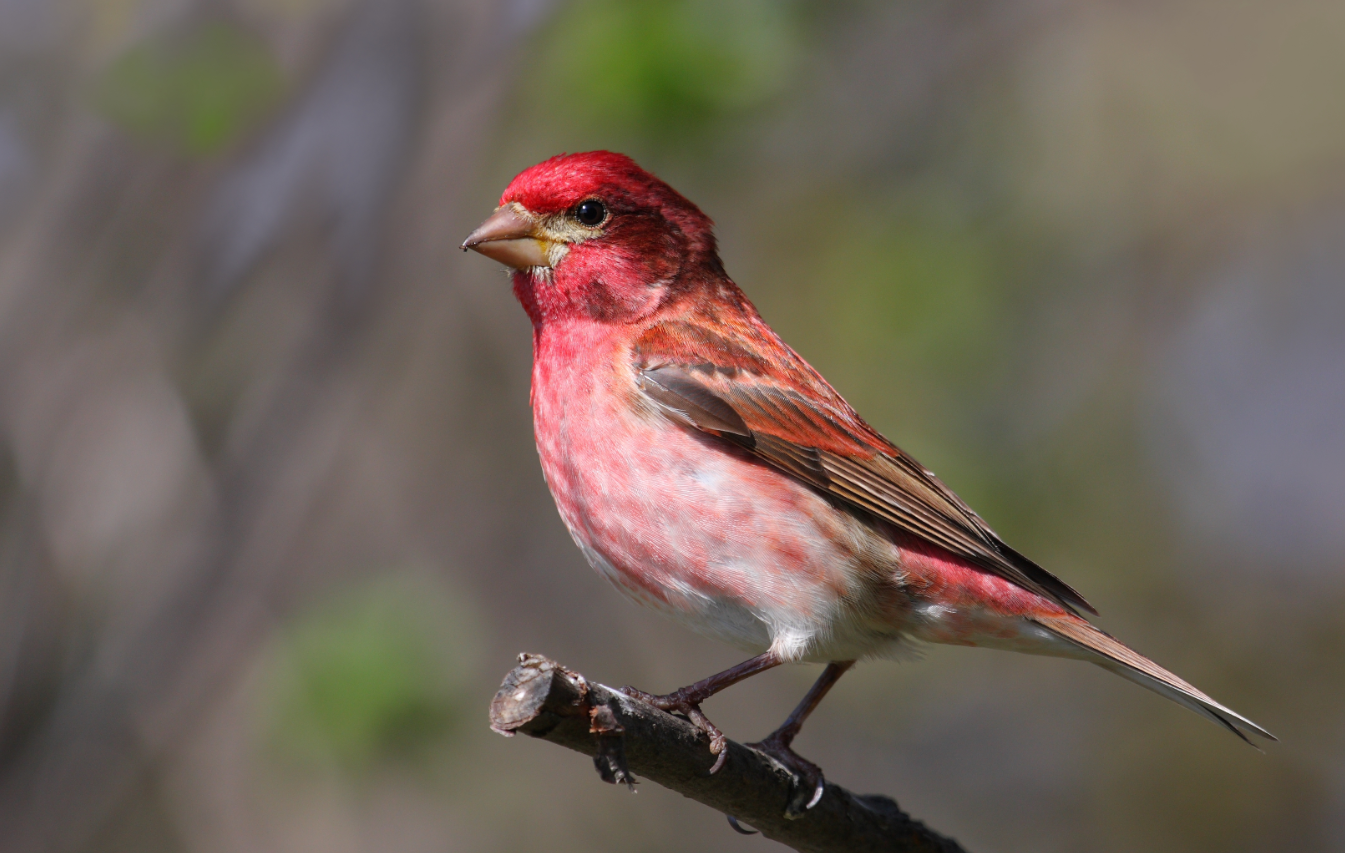
- Beautiful but hard to find in Wisconsin.
- Males are bright raspberry red with notched tails, differentiating them from the more common House Finch.
- Females have distinctive cool facial markings.
- Prefer seeds from conifer trees, making those areas good for spotting them.
- May visit feeders in winter, offering a special treat for bird watchers.
Frequently Asked Questions
What Time of Day Are Red Birds Most Active in Wisconsin?
In Wisconsin, red birds like the Northern Cardinal and Scarlet Tanager are busiest early in the morning and later in the afternoon. This is when they usually go out to find food.
How Do Weather Conditions Affect Red Bird Sightings?
Bad weather, like rain or snow, can make it hard to see and can keep the birds from being as active, so we don’t see them as much. On the other hand, when the weather’s nice and mild, it’s a lot easier to spot them.
What Are the Nesting Habits of Wisconsin’s Red Birds?
Wisconsin’s red birds have different ways of making their nests. Northern Cardinals like to nest in dense bushes. Scarlet Tanagers go for the high branches of trees. House Finches, on the other hand, pick ledges or trees in cities.
Can Red Birds in Wisconsin Be Found in Urban Areas?
Yes, you can find red birds like the Northern Cardinal and House Finch in Wisconsin’s cities. They adapt well to urban life, often visiting backyard feeders and city parks.
What Are the Migration Patterns of Red Birds Visiting Wisconsin?
Red birds in Wisconsin have different migration habits. For instance, the Scarlet Tanager flies off to South America when winter comes. On the other hand, the Northern Cardinal sticks around throughout the year.
Conclusion
In conclusion, Wisconsin’s red birds greatly enhance local biodiversity and are a treat for birdwatchers. From the bright Northern Cardinal to the harder-to-spot Scarlet Tanager, each bird brings its own color and song to the area. Watching these birds is enjoyable and shows how important it is to protect their homes to keep them around.
Whether you’re an experienced birdwatcher or just starting out, the beauty and diversity of these red birds in Wisconsin will make you appreciate nature more. Remember to be respectful and enjoy these colorful birds responsibly. It’s important for our own knowledge and for keeping Wisconsin’s natural heritage alive. Keep visiting Animals District for more information and details.

